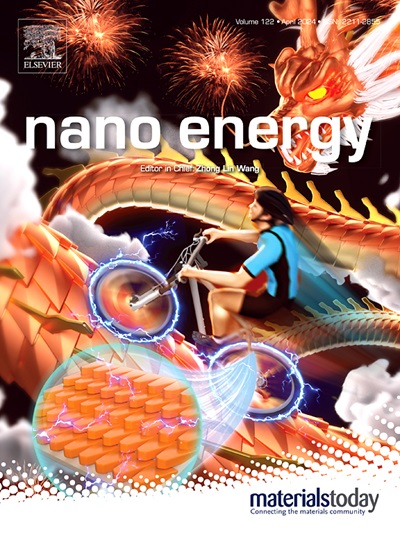Janus-structured composite nanofiber membranes with heterointerfacial engineering for high-performance all-solid-state lithium metal batteries
IF 17.1
1区 材料科学
Q1 CHEMISTRY, PHYSICAL
引用次数: 0
Abstract
Composite solid electrolytes (CSEs) are promising for solid-state lithium batteries (SSLMBs) due to their enhanced mechanical strength and safety. However, their low ionic conductivity and interfacial instability hinder practical applications. In this study, a Janus-structured composite fiber membrane is introduced to improve the performance of PEO-based electrolytes. The Janus structure creates a heterogeneous interface within the PEO matrix, providing multiple ion transport pathways. Density functional theory (DFT) calculations show that the Janus fiber membrane alters the lithium-ion solvation environment, enhancing lithium-ion migration. The C-F groups and Lewis acid-base sites on the fiber surface promote lithium salt dissociation and facilitate the formation of a stable Li3N/LiF interfacial SEI. This design reduces the Li+ migration barrier, ensuring uniform lithium deposition and improving interface stability. The PHSL-CSE electrolyte achieves 7.60 × 10−4 S cm−1 ionic conductivity at 50°C, with a lithium-ion transference number of 0.75 and excellent mechanical strength. Batteries with this electrolyte show high cycling stability, rate performance, and flexibility. Pouch cells power flexible devices such as ACEL light-emitting devices and EMG sensors, maintaining functionality under extreme conditions, including folding and puncturing. This work provides insights for high-performance, flexible all-solid-state lithium batteries for energy storage and wearable electronics.

高性能全固态锂金属电池的异质界面工程双面结构复合纳米纤维膜
复合固体电解质(cse)由于其提高的机械强度和安全性,在固态锂电池(sslmb)中具有广阔的应用前景。然而,它们的低离子电导率和界面不稳定性阻碍了实际应用。在这项研究中,引入了一种双面结构的复合纤维膜来改善peo基电解质的性能。Janus结构在PEO基质中创建了一个异质界面,提供了多种离子传输途径。密度泛函理论(DFT)计算表明,Janus纤维膜改变了锂离子的溶剂化环境,增强了锂离子的迁移。纤维表面的C-F基团和Lewis酸碱位点促进锂盐解离,有利于形成稳定的Li3N/LiF界面SEI。该设计降低了Li+的迁移屏障,保证了锂的均匀沉积,提高了界面稳定性。PHSL-CSE电解质在50℃时离子电导率为7.60 × 10−4 S cm−1,锂离子转移数为0.75,机械强度优异。使用这种电解质的电池表现出较高的循环稳定性、速率性能和灵活性。袋状电池为柔性设备供电,如ACEL发光设备和肌电信号传感器,在极端条件下保持功能,包括折叠和穿刺。这项工作为用于能量存储和可穿戴电子产品的高性能、柔性全固态锂电池提供了见解。
本文章由计算机程序翻译,如有差异,请以英文原文为准。
求助全文
约1分钟内获得全文
求助全文
来源期刊

Nano Energy
CHEMISTRY, PHYSICAL-NANOSCIENCE & NANOTECHNOLOGY
CiteScore
30.30
自引率
7.40%
发文量
1207
审稿时长
23 days
期刊介绍:
Nano Energy is a multidisciplinary, rapid-publication forum of original peer-reviewed contributions on the science and engineering of nanomaterials and nanodevices used in all forms of energy harvesting, conversion, storage, utilization and policy. Through its mixture of articles, reviews, communications, research news, and information on key developments, Nano Energy provides a comprehensive coverage of this exciting and dynamic field which joins nanoscience and nanotechnology with energy science. The journal is relevant to all those who are interested in nanomaterials solutions to the energy problem.
Nano Energy publishes original experimental and theoretical research on all aspects of energy-related research which utilizes nanomaterials and nanotechnology. Manuscripts of four types are considered: review articles which inform readers of the latest research and advances in energy science; rapid communications which feature exciting research breakthroughs in the field; full-length articles which report comprehensive research developments; and news and opinions which comment on topical issues or express views on the developments in related fields.
 求助内容:
求助内容: 应助结果提醒方式:
应助结果提醒方式:


